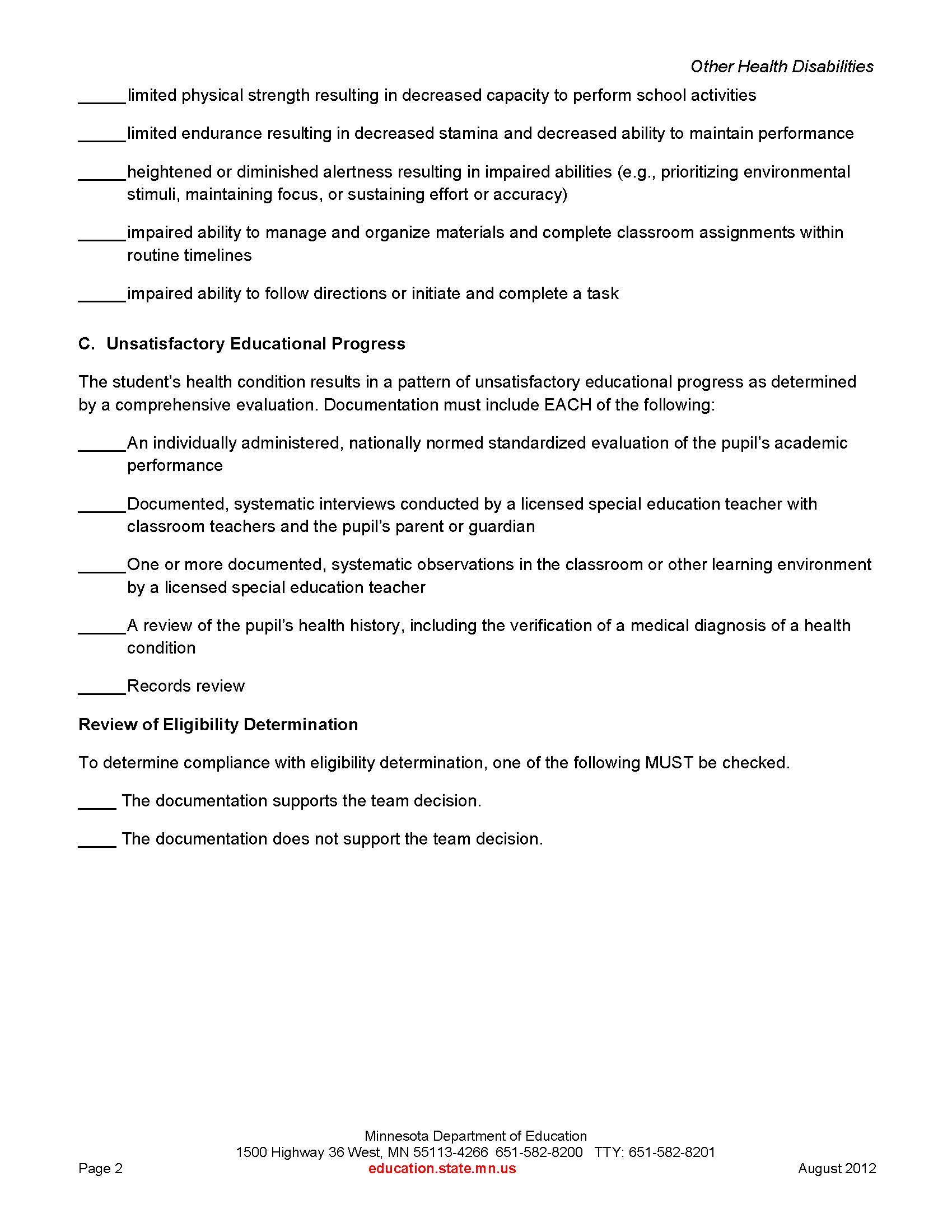
Other Health Impairments
Disability Label & Prevalence |
Definition |
General Characteristics |
Identification & Assessment |
Educational Approaches |
Educational Placement Alternatives |
Other Health Impairments 11.6% Special Education Population |
IDEA - having limited strength, vitality, or alertness, including a heightened alertness to environmental stimuli, that results in limited alertness with respect to the educational environment, that— |
Depends on disability and individual |
Depends on disability and individual |
Teaming and Related Services: physical therapists, occupational therapists Environmental Modifications Assistive Technology Animal Assistance Special Health Care Routines: seating and movement, lifting and transferring students Independence and Self-Esteem |
General Education Classroom Resource Rooms Separate Classrooms Home/Hospital |
Description of 2 evidence-based strategies |
ADHD - TWA: Students are given passages to read and are asked to identify: “Think Before Reading” which means questions like “What’s the author’s purpose? What do you know? What do you want to know?,” and “Think While Reading” which is reading speed, linking knowledge, rereading, and lastly “Think After Reading” which focuses on main idea, summarizing information, what you learned. Students who practiced the nine steps when reading improved scores significantly. (Johnson, Reid, & Mason, 2011) |
Practitioner Based Article related to this area: Include reference and summary of the article. |
Daily Report Cards: a list of target behaviors and overall behavioral goals that are aligned with a child’s Individualized Education Program and can be documented by a teacher on a daily basis. The report finds that use of DRC improved both the student’s academic success and behavior. (US Department of Education, 2012) |
MN Eligibility Checklist

